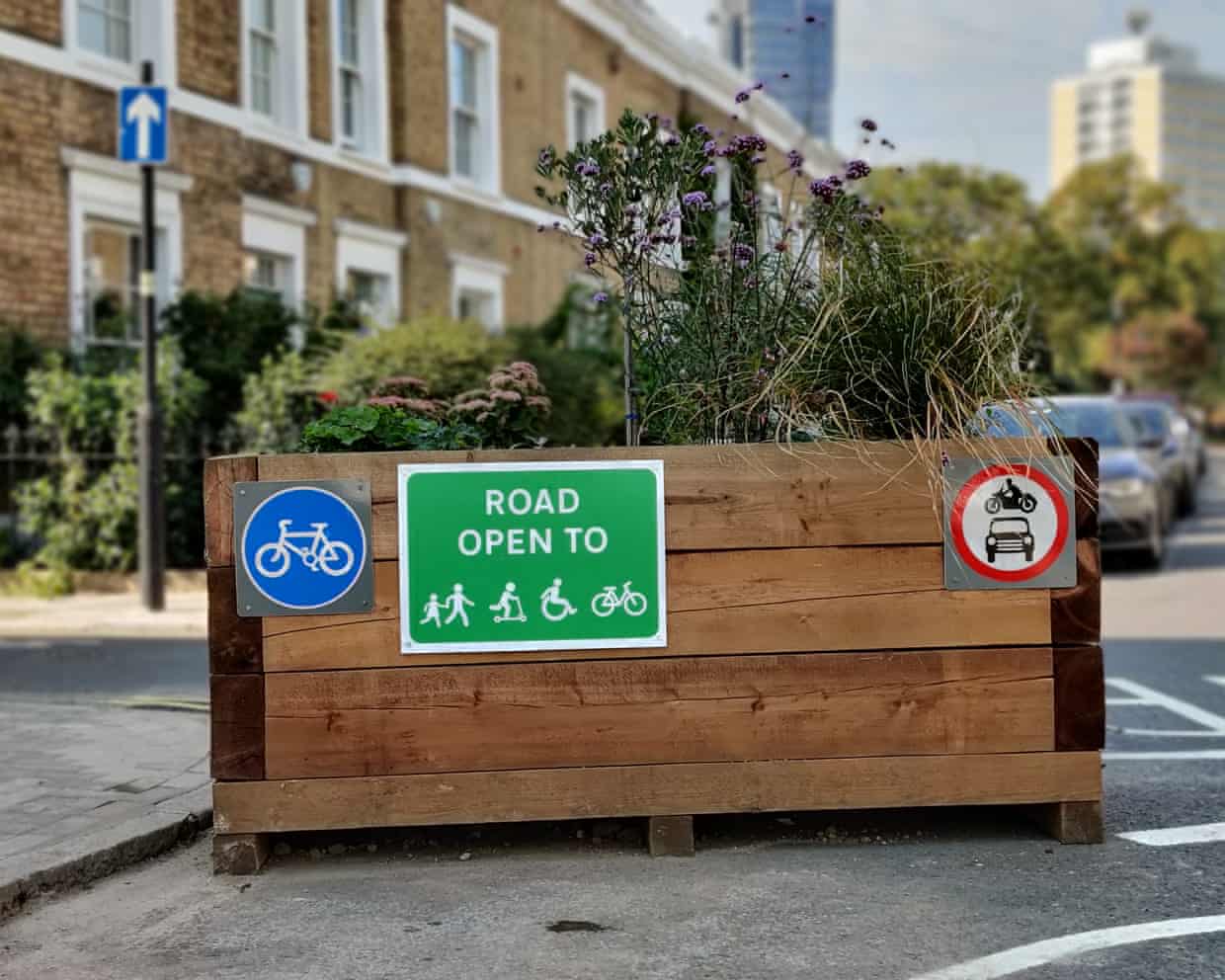We were disappointed to read Joseph Harker’s article (Opposing LTNs doesn’t make you a ‘culture war’ petrol-head. Just look at what happened in Lambeth, 14 May). As a collective of residents from Lambeth, we advocate for streets that are safer and healthier for everyone in our community.
The points made by Harker do not align with the tangible benefits of low-traffic neighbourhoods that we experience daily, nor do they match the growing evidence that supports their positive impact on people’s lives.
Contrary to Harker’s claim that low-traffic neighbourhoods merely reallocate traffic from side roads to main roads, the implementation of these zones in Lambeth and other areas has contributed to substantial overall reductions in traffic throughout the community.
Councils that have adopted LTNs have meticulously examined their effects on boundary roads. A thorough review of various LTN assessments revealed that, on average, traffic changes on boundary roads are minimal, and there is a belief that these outcomes may improve over time as residents adjust their habits. Additionally, data indicates that incidents and injuries have significantly decreased within low-traffic areas, without an uptick on adjacent roads.
The often-repeated notion that roads are rendered “cut off” is simply not accurate; every road within an LTN remains accessible for motor vehicles. What these measures effectively do is curb rat-running.
There is no evidence to suggest that low-traffic neighbourhoods lead to higher pollution levels. In fact, various studies employing different approaches have discovered that overall car usage and/or ownership tends to decline among residents within LTNs. This includes findings from Lambeth.
Furthermore, Harker’s piece overlooks other successful low-traffic neighbourhoods in Lambeth, such as Railton Road, Brixton Hill, and Oval, all of which have fostered safer, healthier communities without causing problems on boundary roads—among many other successful LTNs and traffic-calming initiatives across London and Europe.
Jon Bromwich and Heather Glass
Lambeth Living Streets
Thank you, Joseph Harker, for shedding light on how Lambeth council has “overlooked petitions and public protests in their quest to adopt a green identity amidst a lack of notable accomplishments.”
Residents of the Kennington Park estate at the Oval, Lambeth, feel trapped by the enforcement of a low-traffic neighbourhood called Kennington Oval Reimagined. For two hours each day, we are prohibited from receiving deliveries or taking taxis, and we cannot access services from plumbers or health visitors. Previously quiet streets surrounding the estate have become congested with large trucks for supermarkets and construction projects. Moreover, the designated traffic-free roads, cluttered with overgrown planters and uncollected waste, attract speeding e-bike riders who pose risks to pedestrians and children.
I desire clean air and a healthy community. The council’s ongoing expansion of LTNs appears to have the opposite effect, and they are becoming increasingly unpopular.
Joan Twelves
Former leader, Lambeth council; chair, Kennington Park estate tenants’ and residents’ association
In reaction to Joseph Harker’s piece, the issue is that, echoing a Brexit argument, while not all critics of low-traffic neighbourhoods are culture war petrol-heads, it seems that all culture war petrol-heads are firmly against LTNs.
The recent high court ruling against Lambeth council has predictably been celebrated by rightwing media and their more extreme online factions, brandishing it as a sign of the impending demise of LTNs. This will undoubtedly complicate the ability of local governments to create cleaner, greener spaces that are more welcoming to pedestrians and will certainly discourage children from cycling to school.
It is evident that enhancing the quality of life for residents by decreasing vehicle use in urban areas must be approached thoughtfully and judiciously. However, legal decisions that hinder councils’ capacities to pursue necessary changes—changes that are crucial for reducing pollution, lowering accident rates, and creating more serene street environments—only serve to undermine progress.
Graham Clews
Lewes, East Sussex
In today’s polarized, social media-driven society, it was refreshing to read Joseph Harker’s fair and empathetic article addressing the legitimate challenges faced by individuals concerned about low-traffic neighbourhoods over the past five years.
Many, if not most, of us who have opposed LTNs do not do so out of a desire to drive whenever and wherever we please or out of disdain for cyclists, but rather because we cannot endorse the social and environmental unfairness of diverting traffic from our streets onto already congested and more polluted “boundary roads,” where residents often have lower incomes.
We are unable to accept the discrimination faced by disabled and elderly neighbors reliant on cars who are compelled to travel considerable distances to access services, and we are alarmed by the detrimental effects road closures have on small businesses and local jobs. Yet, whenever we propose alternative, fairer methods of reducing car usage, our suggestions fall on deaf ears. The council insists it alone knows best what is effective for our community.
As a co-founder of one of fifteen community groups that banded together in January to urge the government to mandate that councils cannot impose LTNs without the consent of local residents, we feel uplifted to see columnists like Joseph Harker from the Guardian who recognize the legitimate concerns of residents and uphold our right to have a voice. Thank you.
Richard Aldwinckle
Co-founder, One Dulwich
Do you have thoughts on anything you’ve encountered in the Guardian today? Please email us your letter, which will be considered for publication in our letters section.

